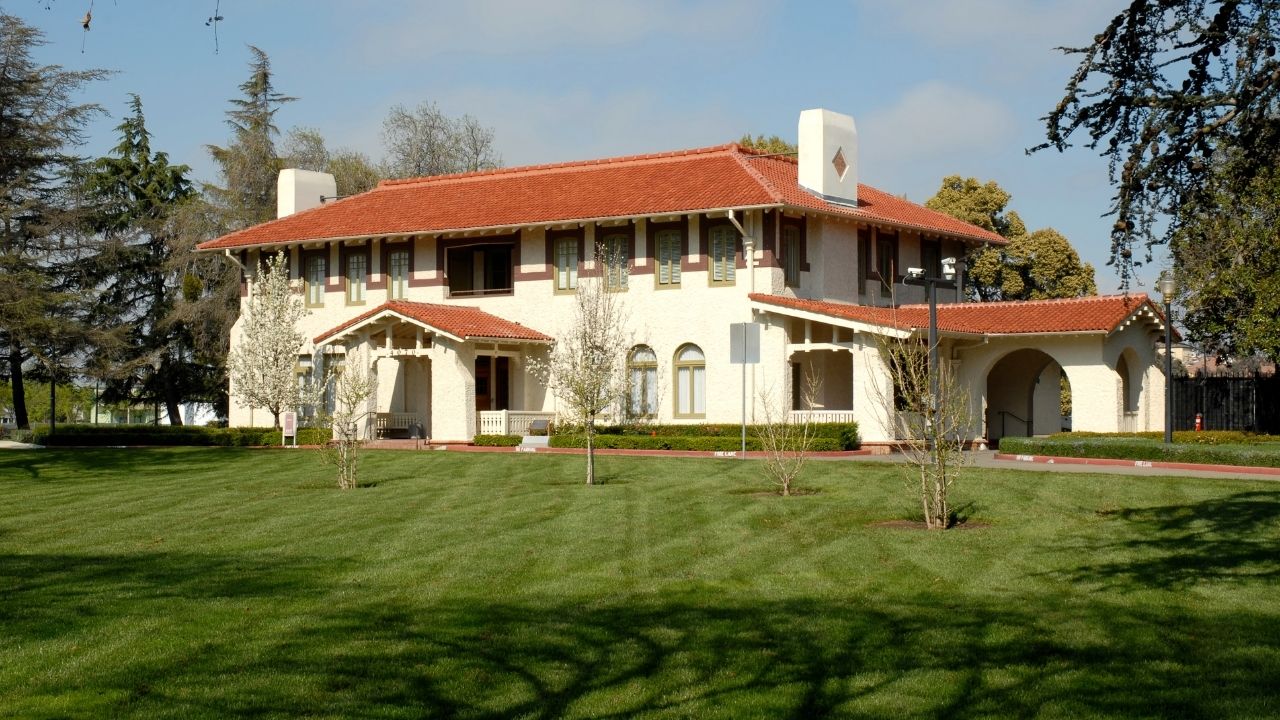Lifestyle
Why You Should Avoid Moving Elderly Loved Ones into a State Facility

Nobody is ever truly prepared to move a loved one into a care facility. Whether it’s an assisted living environment or a long-term care (LTC) facility, it’s not an easy move. It’s hard for older people to be forced into an unfamiliar living environment that doesn’t feel like home.
Although most people can get their care completely covered by moving into a state-run facility, it’s not the best choice. Ideally, your loved one will be happier in a private facility. Here’s why.
- State facilities don’t have the budget to create a thriving environment
Everyone deserves to live in a luxurious environment with homemade meals and plenty of love and care. That’s exactly what Anna Pittard thought when she created Cotton Grove Estate – an exceptional personal care home for seniors in Georgia.
It’s not hard to create a thriving environment. Luxury private care homes exist all around the United States. However, state-run facilities don’t have the budget to create this type of atmosphere. That’s where they fall short.
State-run facilities rely on government funds that don’t go nearly as far as they should. For example, budget priorities are functional rather than aesthetic, even though aesthetics play a huge role in a person’s ability to thrive in their environment.
State facilities tend to furnish rooms and common areas with drab furniture, drab upholstery, and residents are lucky if the wall décor is even slightly inspiring. Most of the time décor doesn’t even match.
Private facilities, on the other hand, hire interior decorators to create an environment that supports the residents in feeling good wherever they roam.
- State-run LTC facilities feel more like a hospital
Unless you’re moving your loved one into an assisted living facility, they’re probably going to be living in an environment that feels more like a hospital than a home.
Long-term care facilities generally have two residents per room and each bed is separated by a hospital curtain. While residents can have personal belongings, there’s no real privacy or room to decorate to any extent.
Although one lucky room resident gets a window view, they still have to stare at a curtain. Staring at a hospital room curtain can be depressing. The hospital environment is amplified by the fact that people come in and out all day long to check vitals and administer medication.
- State-run nursing homes are usually (and perpetually) understaffed
It’s unfortunate that any care facility would be understaffed, but it’s a common problem with state facilities. Being understaffed places a huge burden on staff. Even the best nurses and aides struggle to do their job and be there for their residents.
Often, staff members can barely finish their basic tasks distributing medications, getting residents fed, bathed, and changed. That leaves no time to connect, play a game of cards, or just talk with residents. Companionship is necessary, yet it’s not in the budget.
In a state facility, your loved one may miss out on these important things:
- Companionship. Sometimes people just want someone to chat with about their life. Staff in a state facility don’t usually have time to chat for longer than it takes for them to perform their duties.
- Eating meals with company. Many people prefer to eat their meals with other people and eating alone is a guaranteed path to depression. If it’s hard for someone to get out of bed, they’ll struggle to get to the dining room to eat with others.
- Having their living space organized. State staff don’t have time to tidy up a resident’s room to keep it looking good. Things like aligning books on a bookshelf, standing greeting cards back up, and flipping the calendar to the current month often go ignored. Attention to these details can make all the difference in a patient’s wellbeing.
Choose private care whenever possible
Statistics show that people who move into nursing homes pass away within 6 months. Sometimes it’s because of an illness, but much of the time people lose interest in life because of their environment. They stop eating, drinking, and won’t participate in activities.
If you don’t have a choice, make sure you do thorough research before choosing a state facility. Visit potential facilities multiple times (unannounced) and do extensive research to get the full picture. This includes requesting each facility’s state inspection survey (Form 2567), which they are legally required to provide.
If you can put your loved one in a private facility, don’t hesitate. They’ll have a higher quality of life and that’s always worth the extra cost.
Lifestyle
How Magic Moment Resort Became the Pioneer of a New Era: The First-Ever Dazzler Select by Wyndham

In Central Florida’s packed landscape of family hotels and theme park lodgings, a unique kind of property has emerged. Magic Moment Resort & Kids Club in Orlando is earning attention from traveling families for a simple reason. It delivers joy, warmth, and convenience at a smart value that keeps Disney dreams accessible rather than overwhelming.
By joining Wyndham, Magic Moment Resort unlocks the strength of a global powerhouse, gaining worldwide visibility, advanced technology, and access to Wyndham Rewards, the largest hotel loyalty program on the planet. This strategic move expands its reach, builds guest trust, and amplifies its impact, all while preserving the unique identity that sets it apart.
Just a short drive from the gates of Walt Disney World, the resort sits along the palm-framed stretch of West Irlo Bronson Memorial Highway. The location has long been known for its tourism bustle, yet Magic Moment has carved out a softer identity. It feels playful and colorful, but also intentional. It is designed by a family for other families, and that perspective shapes every experience on the property.
A Philosophy Rooted in Family Connection
Magic Moment Resort was built with a belief often forgotten in today’s tourism industry. Family vacations should feel uplifting instead of stressful, and affordability should not come at the expense of comfort or creativity.
Check-in feels more personal than transactional. Parents arrive with strollers, snacks, and tired children. The staff seems to understand this rhythm instinctively. The energy is warm, the pace is easy, and the tone is set long before anyone even enters the room.
Unlike competing hotels that charge a steep premium for proximity to the parks, Magic Moment focuses on smart value without compromise. Its pricing strategy is refreshingly straightforward. Families can stay five minutes from Disney without draining their travel budgets. For many guests, that difference helps shift resources from hotel costs to experiences. It means more character breakfasts, more souvenirs, and more freedom to enjoy the parks without financial tension following every decision.
Spaces Designed for Children and Considerate of Parents
Magic Moment is filled with color, but nothing feels overstimulating. Instead, the resort offers a sense of wonder scaled to a child’s imagination.
The themed family rooms are a highlight. Children step into rooms that feel lighthearted and whimsical, yet parents appreciate that they are also functional and comfortable. It is the atmosphere of a themed suite without the theme park price.
Its Kids Club and Teens Club reflect that same thoughtful balance. These spaces invite exploration and creativity for children and provide a nurturing level of supervision. Parents can enjoy an hour by the heated pool, relax in a shaded cabana, or simply take a quiet moment while knowing their children are safe and engaged.
The resort’s grounds encourage slow mornings and gentle afternoons.There’s a 30,000 sqf outdoor playground as well as peaceful corners for parents. Importantly, families are not asked to pay additional fees to enjoy them. Magic Moment’s amenities feel generous rather than transactional.
Unforgettable Days at the Parks
For families navigating a Disney vacation, convenience is often the true luxury. Magic Moment delivers this with a complimentary delicious hot breakfast that encourages everyone to sit and enjoy the start of the day rather than rush through it.
Transportation to the parks is included, which removes one of the most common stress points for visiting families. There is no parking lot maze and no long lines at the toll booths. Guests simply board the shuttle and begin their day with ease.
When the sun sets and everyone returns from a day of rides and parades, the resort becomes a place to unwind. Children head straight for the pool. Parents sip Starbucks coffee. The atmosphere is relaxed and bright, and the resort feels like an extension of the Disney experience rather than a pause from it.
A Value That Resonates with Families
What truly elevates Magic Moment is the balance it achieves between smart value and experience. The resort has cultivated a loyal following because guests feel they receive more than they pay for. More thoughtful design. More space for connection. More comfort without excess.
Affordability here does not signal minimalism. Instead, it allows families to breathe. It creates space for shared moments that are often overlooked in the rush of theme-park vacations. Children play freely. Parents unwind without guilt. Families spend more time together and less time navigating logistics.
A Resort Built with Heart
Magic Moment Resort & Kids Club stands out in a region overflowing with hospitality options. Its charm is not rooted in extravagance. It is grounded in sincerity. It reflects the belief that family travel should feel joyful, accessible, and full of color.
For families planning a Disney visit, it represents more than a place to sleep. It is a retreat where memories can form in the quiet moments as much as in the thrilling ones.
At Magic Moment, the greatest luxury is not an amenity. It is the feeling of being exactly where you are meant to be, together.
-

 Tech5 years ago
Tech5 years agoEffuel Reviews (2021) – Effuel ECO OBD2 Saves Fuel, and Reduce Gas Cost? Effuel Customer Reviews
-

 Tech6 years ago
Tech6 years agoBosch Power Tools India Launches ‘Cordless Matlab Bosch’ Campaign to Demonstrate the Power of Cordless
-

 Lifestyle6 years ago
Lifestyle6 years agoCatholic Cases App brings Church’s Moral Teachings to Androids and iPhones
-

 Lifestyle5 years ago
Lifestyle5 years agoEast Side Hype x Billionaire Boys Club. Hottest New Streetwear Releases in Utah.
-

 Tech7 years ago
Tech7 years agoCloud Buyers & Investors to Profit in the Future
-

 Lifestyle5 years ago
Lifestyle5 years agoThe Midas of Cosmetic Dermatology: Dr. Simon Ourian
-

 Health7 years ago
Health7 years agoCBDistillery Review: Is it a scam?
-

 Entertainment6 years ago
Entertainment6 years agoAvengers Endgame now Available on 123Movies for Download & Streaming for Free
